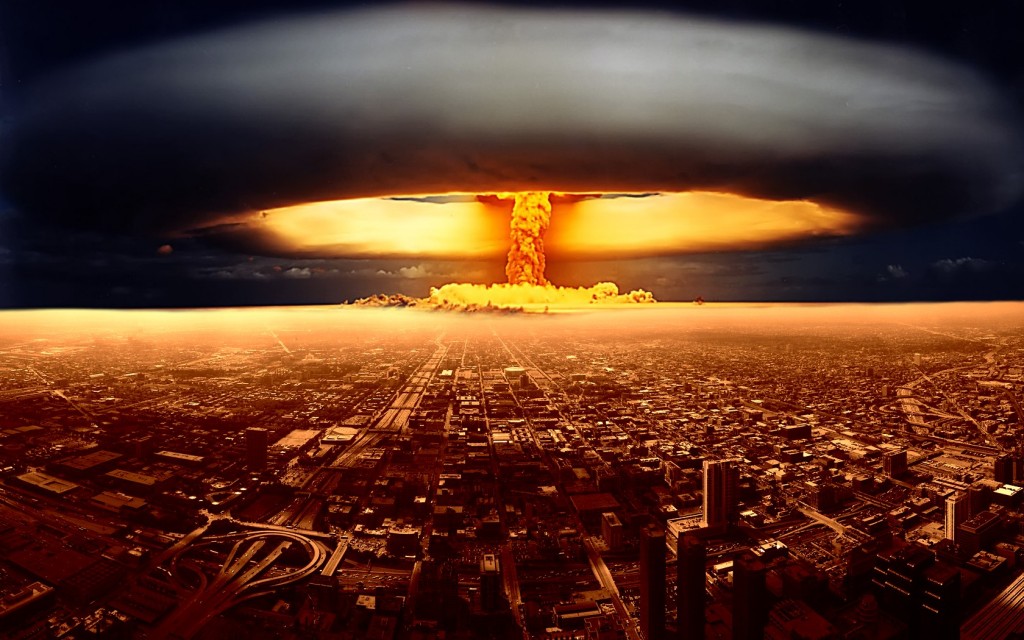The Chennai Floods And India’s Strategic Underside
By Firdaus Ahmed
16 December, 2015
Countercurrents.org

The floods in Chennai for a second time round bring home that our metropolises are quite incapable of withstanding disasters. If natural disasters continue to perplex the administration across the country, be it in Srinagar or Garhwal earlier, it can well be imagined what nuclear conflict aftermath would wreck. In Chennai, it took longer to react since the army was absent, with its Southern Command over at its winter manouvers, Exercise Drad Sankalp. Therefore, public interest is warranted and public interest a must, even in arcane issues of nuclear strategy.
Recent obituaries on the death of Sandy Berger, Clinton’s national security advisor, prompted a return to the Kargil War. Sandy Berger apparently defused an India-Pakistan nuclear crisis during the war, quite like another national security official, Robert Gates, had done once previously in 1990. Alongside, excerpts from an Indian war correspondent’s just released memoirs of the period also make a mention of the nuclear dimension to the conflict.
Reportedly, Brajesh Mishra went over to Europe to suggest Americans use their good offices with the Pakistanis to wind up their intrusions in Kargil, or else India would use all measures to evict them. The hint was that India may require crossing the Line of Control (LC) and, following its 1965 War footsteps, would not necessarily restrict itself to the LC sector. This could provoke a nuclear response from Pakistan, necessitating nuclear retaliation by India. The scenario impressed Clinton enough to persuade Nawaz Sharif to call back the Pakistani intruders. The rest as they say is history.
The Kargil War prompted a rethink in India at both levels: conventional and nuclear. However, there was a mismatch between the two. While at the conventional level, India went on to a proactive and offensive doctrine, at the nuclear level it promised ‘massive’ – city busting – nuclear retaliation. A conventional offensive could prompt a Pakistani nuclear counter, leading to reflexive escalation on India’s part that would insensibly put its own cities at risk.
This would have been sustainable in case the conventional offensive was made a remote possibility by measures such as meaningful talks over conflict triggers such as Kashmir. However, while the talks did get underway, as the then Pakistani foreign minister Khurshid Kasuri’s memoirs testify, they could not be sustained and eventually were derailed by Mumbai, 26/11.
The latest Exercise Drad Sankalp has all the hallmarks of nuclear dangers: ‘decisive manoeuvres by mechanized forces on ground in harmony with utilization of the Third Dimension (air power (added)) to ensure complete dominance of the battlefield.’ The highlighted phrases would tend to trigger Pakistan’s nuclear card, officially pointed out finally by its foreign secretary only this September.
The mention of ‘integrated theatre’ concept the finds mention in the press note suggests that the manouvers appear to be prepared for such an eventuality. What the phrase means is that even though the Pakistani frontage has three geographic commands arrayed, they are capable of fighting as one, as was the case in the 1965 War in which General Harbaksh Singh was the de-facto theatre commander. While in 1965, the war was brought to an end with General JN ‘Mucchu’ Chaudhuri pleading lack of artillery ammunition, the integrated theater concept also entails integrated logistics, implying that India could rely on its depth in resources to continue the war despite its going nuclear.
India is evidently still fighting the last war. Deterrence wonks would have it that this ability will strengthen deterrence by implying ‘escalation dominance’, an ability to prevail even if Pakistan goes nuclear and at any level of nuclear exchange(s). However, the Chennai floods bring home that this does not hold for the civilian front. It would be wishful to believe that the civilian front will remain unscathed in war.
The favoured scenario is of Pakistan setting off a few tactical nuclear warheads to thwart India’s mechanized forces. However, with its conventional forces continuing the war – an ability the military exercises underway testify – then it would be yet again bringing its cities under risk. Pakistan, once it has broken the nuclear taboo, will unlikely defensively restrict nuclear salvos to its own territory, hurting itself multiple times over in addition to suffering India’s retaliation. Therefore, India’s prolonging the war despite Pakistan’s introduction of nuclear weapons would open the way for nuclear escalation.
India needs instead to end war immediately on its going nuclear. This was the conclusion of India’s leading nuclear thinker, General Sundarji (Blindmen of Hindoostan, Delhi: UBS Publishers, p. 102) that now needs dusting and readying for doctrinal battle.
Nuclear hawks would have it that this plays into Pakistani hands, enabling that state to get away. India must instead be firm and resolved to inflict punishment. The problem with this argument is India needs to then, alongside, gain ability to withstand punishment. It is debatable whether any society can really ever do so, leave alone India.
As Mr. Modi lands by helicopter to address the military brass assembled for the combined commander’s conference on INS Vikramaditya mid-month, he needs reminding that India would end up as Churchill would have it - a geographic concept – in case India does not lead South Asia off the nuclear path.
His foreign minister’s visit to Islamabad for the Heart of Asia conference has set the stage for more than merely his visit to Islamabad for the SAARC summit. The two national security advisers’ secret meeting in Bangkok heralds a revival of the ‘back channel’. The two must ensure that ‘back channel’ they go beyond nuclear confidence building that is part of the up-front ‘comprehensive bilateral dialogue’ to arrive at a mechanism for nipping the nuclear genie right in the bud.
Firdaus Ahmed (@firdyahmed), author of Subcontinental Musings and Think South Asia, blogs at www.subcontinentalmusings.blogspot.in

